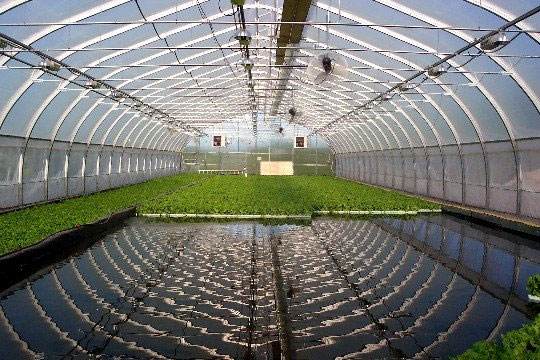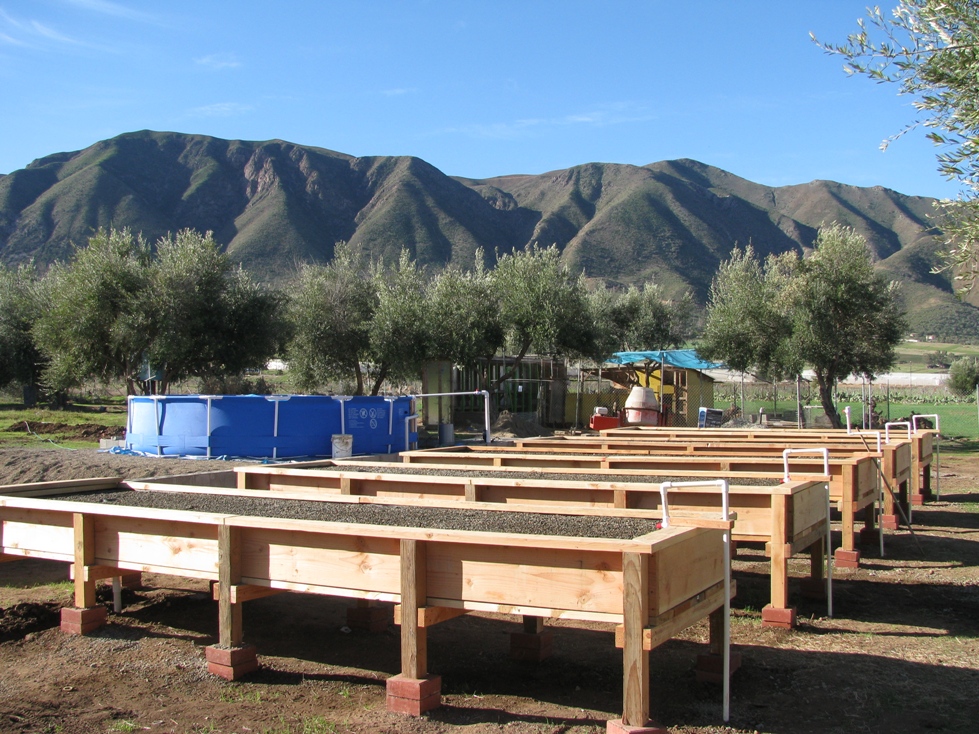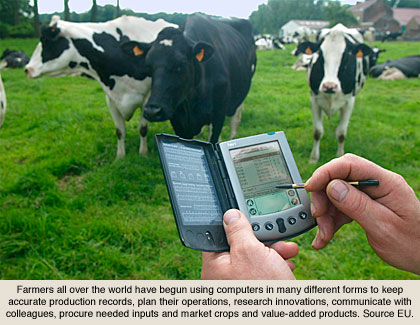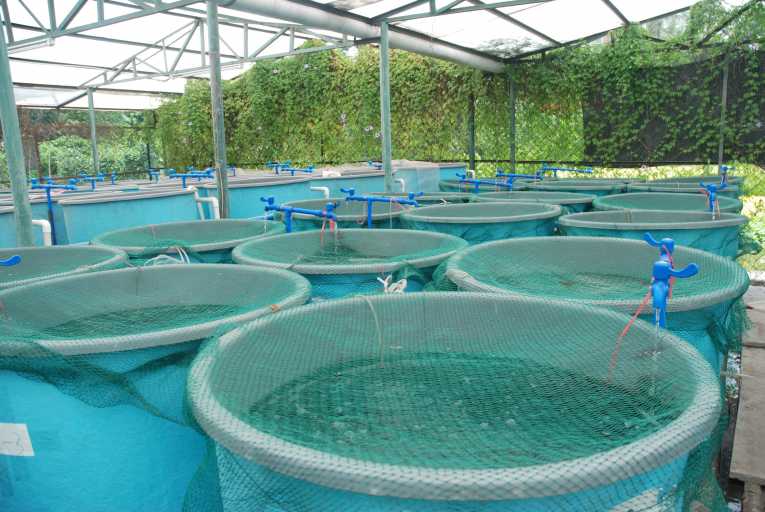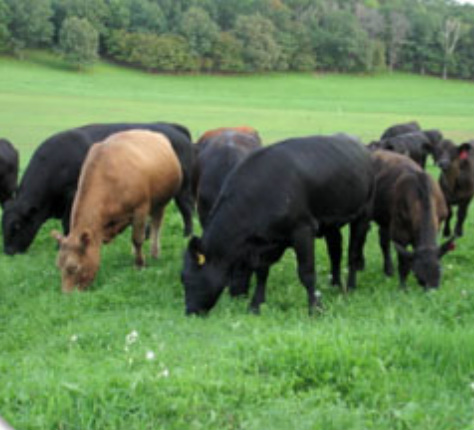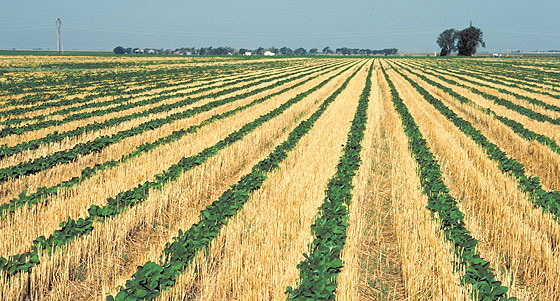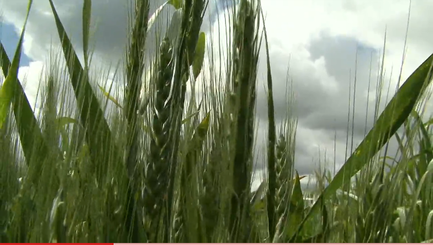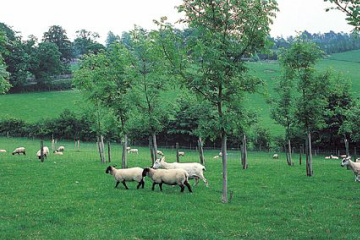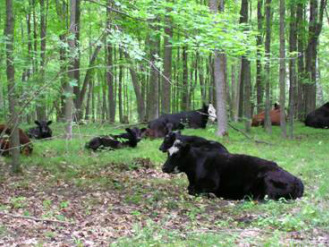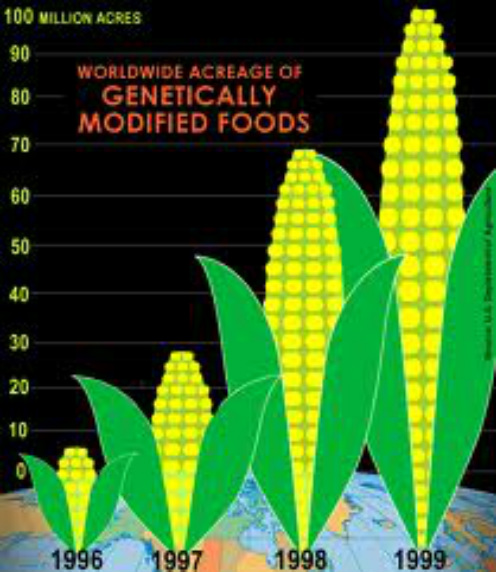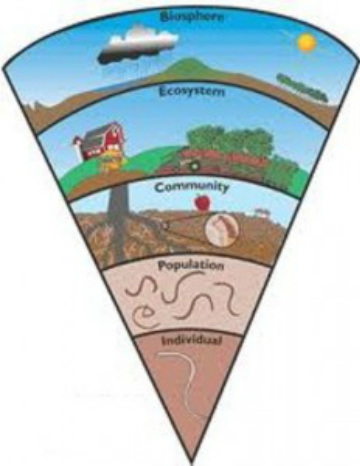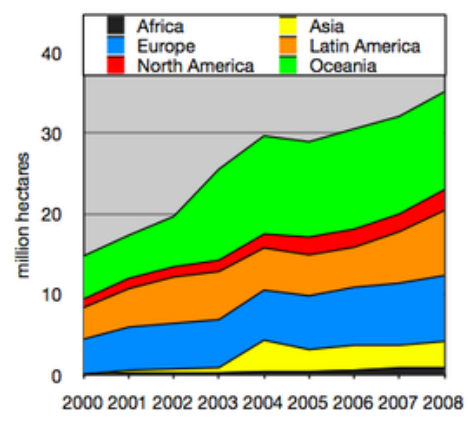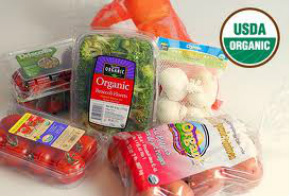The marriage of science, education, and technology has been one of the most crucial and critical elements for the advancement of farming throughout history. Research and new discoveries through science have served to create and improve new and better food crops. Education networks such as land-grant colleges, agricultural societies (National Grange, Farm Bureau) and government agencies have served to keep farmers informed and aware of trends and methodologies that constantly change in the complex world of farming. Although application of technology has always been at the core of all farming, it will take on an even greater significance in the new millenium as small farms seek to work smarter in areas as diverse as internet-marketing, innovative packaging and storage, and a plethora of ecologically-driven methodologies.
|
|
Small FarmTechnology: Melding Innovation with Traditional Methodology
"Being Educated and Educating Others" Moving forward the small farm operator must constantly update his base of knowledge, at first becoming aware of new technologies and then developing the skill-set to critically assess these new ideas. This two-fold process involves having the discipline to budget time to obtain this information. The sources for obtaining this information are many and diverse. Written and electronic material distributed by land-grant institutions ( i.e.: Cornell, Penn State, Ohio State etc.) cooperative extensionsions, government agricultural agencies, agricultural organizations, and manufactuers are unexhaustible and constantly updated sources that are invaluable . (View a listing and links in Reading and Related sub-page ) |
Ten Important and Emerging Technologies and Methodologies
|
Hydroponics/Aguaponics/Aquaculture
Looking "outside the box" and considering new profit centers is a prerequisite to farming success. Not only do new ideas and technologies provide additional sources of revenue and have the potential mitigate the seasonal nature (and income) of conventional farming, they also force farmers to consider cross-technologies and methodologies that might benefit their existing operations.Water-based farming technology that includes hydroponics, aguaculture, and aguaponics are in essence, extensions of conventional farming methods with the same basic inputs. Hydroponics, the growing of terrestrial plants in a nutrient enriched water solution, is a technology that has roots going back literally hundreds of years. Since achieving levels of commercial viability beginning in the 1970's, this methodology now has achieved a high degree of technological and monetary success. Unlike field growing operations, hydroponics employs a closed system in a controlled environment. If properly managed, these systems can reduce water requirements, lessen or eliminate the need for toxic chemical pest controls and exacerbate IPM effectiveness in crops that do require supplemental controls. Additionally, labor costs for such operations as weeding, tilling, and even harvesting can be reduced significantly. While not currently adaptable to all crop species, this technology is an adjunct worth considering for produce operations that are looking for ways to extend their seasons. It is important to note that some crops such as leafy vegetables, can be grown hydroponically throughout the entire year. |
Computers/Software/Electronics
In every aspect of agriculture, electronic access to and the capability of storage of large amounts of information levels the playing field. From software to blogs to instantaneous access to the latest research, the shear volume of information available gives even the smallest farmer a "world view" of the industry. With an initial investment of under $500 and internet access, the computer, smart phone, or electronic tablet allows every farmer the ability to troubleshoot, plan, have access to markets and obtain parts and supplies with basically no limits. In the new millennium, the computer with its many variations is the most important tool on the farm. Each and every concept of operating a small farm as presented in this website, from the pragmatic to the conceptual, can be researched and discussed electronically. Aguaponics and aguaculture, two technologies that have been tried with varying degrees of success for hundreds, possibly thousands of years, are now commercially viable in many regions of the world.
Aquaponics is a true polyculture system in which a subculture of fish and a subculture of plants enter into a symbiotic relationship with the aquafarmer as the catalyst/facilitator. Among the most successful plant species raised in the hydroponic system are lettuce, cabbage, roses, tomatoes, and peppers. To date the most important food fish adapted for this system is the tilapia, with species of perch, cod, and catfish also successful. The sub-system of aquaponics, aguaculture, provides 48% of the total fish harvest in the world today. Diversified in their applications, there are a number of operational paradigms tested and successful that are suitable for the small-scale farm operation. (1)(2)(3) |
|
Low-Till/Low Input Farming
Not to be confused with the lack of proper and culturally acceptable methods, low-till/low input farming refers to the practice of maximizing the internal inputs a farm has to offer (i.e.: intellectual capital, water sources, manures) and minimizing off-farm inputs; especially, but not exclusively petroleum based products (i.e.: fuel, pesticides, and synthetic fertilizers). These considerations illustrate a method in which agriculture can self-adjust to live within the economic realities of the times and do so in way that decreases its carbon-footprint. One method to achieve this goal is a dual-cropping system (as illustrated: right) in which two compatible crops are grown simultaneously, with the first crop (grain) acting as a cover crop for the second (soybeans). Far from being a fringe position or methodology, the pioneering work and foundations for this approach were conducted, refined, and proven by agronomists, crop-specialists, and agriculture economists from the Kansas State Experiment Station(s), the USDA, and the University of Maryland (a partial list).(4) |
Controlled Grazing Systems/ Grassland Farming
Though the essence of the practice of grazing animals on grassland is as old as agriculture itself, refinements through experiments and research have raised it to a scientifically-based and managed system. The benefits of grassland management and grazing range from economic to ecological to ethical. These benefits are a direct product of the balanced approach employed in this methodology. By examining just one element (in this case: herd size) of a controlled-grazing system, the broad range of benefits can be clearly illustrated. Herd size is matched to the land available for grazing. In turn, outside inputs like reliance on petroleum-based, crop-production for supplemental feed are greatly reduced. Manageable herd-size facilitates easy movement between pasture sites allowing short but intensive graze periods on actively growing forage, thus eliminating overgrazing. This balanced grazing period further protects the land itself from erosion and structural and elemental deterioration, even down to a molecular level. Criticisms of grassland grazing include the notion that it consumes more acreage to raise an animal to finish than in a conventional feedlot. This is a misnomer, studies have shown that when considering grain production used to finish feedlot cattle is factored in,in fact, the acreage is identical. When other species such as chickens, sheep, and goats are added to the grazing rotation, production actually increases in terms of food/calories produced per acre. While there are many geographical nuances to this methodology, well managed grassland grazing systems are an established and profitable practice in areas as diverse as New Zealand, the southern United States, and Argentina . Grassland Management and Grass Based farming can also be viewed as key elements in another new and emerging farming technology: Perennial Grains and Grasses. (5)(6)(7)(8)(9)(10) |
Perennial Grains and GrassesClick here to edit
While the development and breeding of new varieties of perennial grain is in its infancy in regards to hardiness and yield, work in this field has been accelerated and advanced greatly within the last decade. Within the plant breeding community and to agriculture futurists as well, perennial crop applications are the future of agriculture, specifically because of the lower inputs required in managing perennials versus annuals. By eliminating annual planting production costs and the energy/fuel inputs currently required, economic and environmental positives become enormous. Current work on the forefront includes a breeding program for Intermediate Wheatgrass ( a forage crop with seed characteristics similar to wheat) and perennial wheat (pwheat). Beyond the use of perennials for food/forage crops, their potential for use as a biomass energy source may prove to be as important. (11)(12)(13)(14) . |
Silvopasturing: Whole-Farm FarmingMany small farms contain unused wooded areas relegated to either
non-productive status or used solely as a woodlot. One current trend is to entirely remove hedgerows and woodlands to gain more tillable acres. An alternative, made possible and feasible by advancements in fencing and livestock containment systems is the adaptation of an old, yet recently modernized methodology termed silvopasture. The practice of silvopasturing seeks to use the assets inherent in woodland (and other marginal land) acres to the betterment of the quality of the herd, to increase productive acreage, control noxious and invasive species, and provide an additional source of forage. In another form of silvopasturing, the farmer intentionally plants trees on marginal land as a “second crop” utilizing herd-feeding, species specific, traits to control unwanted understory growth while enriching the soil with manure. Additionally, the symbiosis created between grazing animals and treed areas in which marketable timber is present can, over a few years, improve the quality of the timber by stimulating forest regeneration through seed and soil scarification, and enhance and accelerate nutrient recycling within the forest. Cornell University studies have shown that the diet diversity provided in a silvopasture setting has direct prophylactic effects in regards to the prevention of health problems often found in grain and conventionally forage-fed animals. In terms of pure economics, the US Forestry Service has illustrated that by distributing long-term management costs between farm (livestock) and timber components overall production costs per acre are significantly reduced and market flexibility and diversity are exponentially increased. (15) (16). |
Genetically Modified SeedsIn the realm of recent advances in agricultural technology, the
advent of genetically modified (GM) seeds/plants (as well as other forms and species) has no peer when it comes to controversy and polarization within the farming community. Proponents point to the advantages of Round-up resistant corn and Bt cotton which interferes with the life cycle of the bollworm rendering the cotton resistant to the insect's damage. In both of these examples, yields increased and production costs decreased however; as opponents have legitimately proven, these improvements can and often do come at a price. In the case of the RU(Roundup-Ready) resistant corn, new Roundup-resistant weeds have naturally evolved within, and on the periphery, of acreage dedicated to continuous cropping of GM/RU resistant corn. Economically, specifically in Third World countries, farmers who must use GM seeds to compete in terms of yield and required inputs find themselves at the mercy of biotech/seed companies with exclusive rights to specific seed products. Furthermore, there are often regulations in place that prohibit farmers from using seed they grow to sow the next year’s crop. Controversy aside, it must be noted that in reality, genetic mutation is also a process that occurs naturally, and hybridization, which has been practiced and accepted for hundreds, if not thousands of years, is a very close relative of the biotech, genetic mutation work done today . . . yet, at a much faster pace . As research is furthered, and the long term effects of GM progeny is evaluated in terms of overall environmental impact, there may ultimately be middle ground that can be reached by farmers of all ilk. There is little doubt that the use of GM products will continue well into the future and certain numbers already bear out this trend (see notes/link 19). Pro or con, every farmer would like to see the day when he or she could spray less, produce more on less acreage, or reduce outside inputs dedicated to the production process. (17)(18)(19) |
Agroecology: Farming As a System Within the Total EnvironmentWhile the term agroecology can be used interchangeably as a technology, a methodology, a philosophy, and a science . . . it is all those things and much more. In its purist form, agroecology, as a study, simply states that agriculture does not live in a vacuum. Furthermore, agroecology as methodology/science/technology brings the industry in all its forms to the realization that it is an integrated natural system and in that realm, working with and contributing to other existing natural (and man-made) systems makes economic and moral sense. Farmers who employ this holistic view when
approaching and applying new technologies gain great long term advantage that include : - Outside inputs that cost money are minimized through the practice of monitoring closed nutrient cycles and interceding in these cycles only when the balance becomes skewed. Further monetary gains can be realized by employing a plethora of technologically-backed biological and cultural practices in lieu of massive prophylactic doses of synthetic pesticides. -Mindfulness of biodiversity as an important and healthy practice on the farm through rotation of crops species and varieties, while extending this observation to understand and insure the survival of beneficial species like parasitic wasps, spiders, worms, and birds. -Understanding the total effect created by the act of farming in human terms. These effects range from fair wages for both farmers and workers, the relationship between the consumer and the farm, and the farm as it influences the health and well-being of end-users, farmers/farm workers, and farm families. (20)(21) |
Biological Soil Testing and ManagementThe history of the modern concept of soil testing dates back to approximately 1845 England when crude analytical methods were developed to understand and evaluate the chemical composition of soil. Until the recent advent and acceptance of the sustainable and organic farming movements by mainstream land-grant colleges and government entities like the USDA, soil testing centered on the mineral and inorganic elements present and available in the soil ,with little focus on soil as a living, breathing, organic entity unto itself. Biological soil testing and evaluation recognizes the soil as the most complex and important component within any context of the concept of sustainable agriculture. In perspective, there is no machine or supercomputer in existence that can equivocate the literally millions of processes and reactions that occur in the micro-realm (to the molecular level) that composes the organic components of the soil. Soil organic matter and microbial activity are the main parameters associated with biological soil testing and evaluation. Once these evaluations are made, farmers can employ a wide and varied range of practices that include crop rotations, cover crops, green manures, composts, rock minerals, and if needed microbial inoculants to ultimately improve soil health and productivity. Small farms with limited acreage, where land-stewardship is all-important in order to maximize production, serve to benefit the most from this technology. Additionally, the concept of accepting the stewardship of any land should be tied to the morality of leaving the soil healthy and alive for future generations of farmers. (22)(23)(24).
|
The Organic Farm: The Inevitability of a Once Controversial Methodology.Including organic farming in a serious discussion of agriculture just a few decades ago would have been met with ridicule and derision from most sectors within the agriculture community. Today, organic farming and its close relative, sustainable agriculture have a serious place within the business of farming from both an economic and technological perspective. Organic farming is one of the fastest growing sectors in farming, quadrupling since the passage of 1990 Organic Foods Production Act to nearly 10 million acres in 2008. Globally, there is an estimated 80 million acres in organic production with the total dollar value approaching $32 billion USD per annum. The adaptation of organic farming methods within the mainstream of agriculture is now common place. Modern no-till methodologies and new pasturing techniques have roots in the principles of organic farming. Those who are still essentially opposed to organic farming do not deny the important market-niche that has been created by the public’s concern over the use of chemicals for food production. In that vein and beyond the moral and philosophical dogma of the subject, the fact remains that in terms of business and profitability, and costs of outside inputs, the organic farming “brand” is a perfect fit for small farmers in the 21st Century. As the public demand for organic products increase, the range of products they want to see (and buy) labeled as Organic or Certified Organic move in sync. Today, Certified Organic products are beginning to hold a quantifiably important place within the overall market in the U.S. with 13% of carrots, 8% of lettuce, 5% of apples, 3% of dairy herds, and nearly 2% of laying hens (eggs). Today, every small farmer must give serious credence and consideration to the opportunities presented by this methodology (25)(26)(27) |
